Operational Excellence
A Quality Story - The Defective Tringle
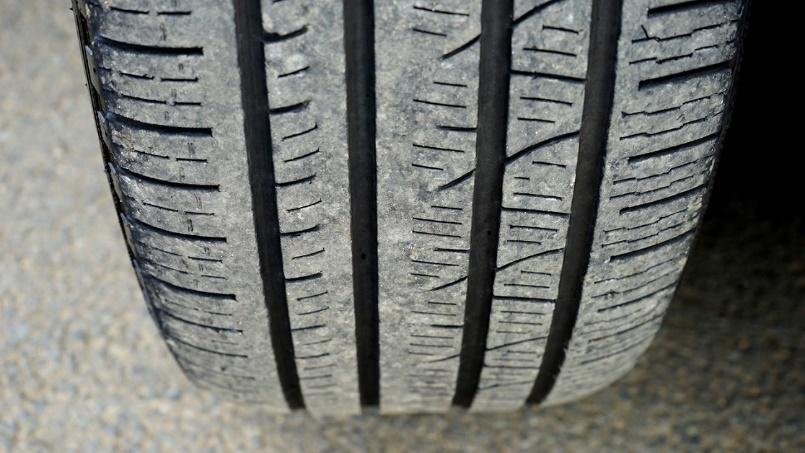 Hi folks, I’m Walter Wardrop, an Operations Management Coach at the Growth Roundtable.
Hi folks, I’m Walter Wardrop, an Operations Management Coach at the Growth Roundtable.
While working with a tire company, I was exposed to the high level at which the company treated quality in their tires. The company had always been respected for their quality and durability, and during my training I was told many impressive stories of why they would reject tires that appeared to me to be perfectly good.
This story occurred at the end of a production run. It is usually difficult to try to make all the components and parts of a tire size run out evenly. In the case of the rubber products, it is not that much of a problem, as the leftover materials can be blended into the next run of the same rubber number. Now in the case of the wire rims, which were called tringles, it was more of an issue, as these parts had to be destroyed and then recycled as metal. The company was coming down to the end of the run, and the production supervisor was closely tracking what materials he had left. Due to some minor scratches on several tringles, he ended up having only one of the pair of tringles necessary to build the last tire. To balance the numbers, he had a look in the reject area, and pulled out a tringle which appeared to be cosmetically excellent but had some minor scratches for which it had been rejected. He put the previously rejected tringle into the system and went off to lunch. Upon returning from the break, the verification operator who worked in that area noticed that there were now two tringles waiting to be used, where there was only one from before break. She called the quality supervisor and explained the situation.
The quality supervisor came up to the area and had a discussion with the production supervisor, and explained that it would be better to just recycle the last tire they were building, as one of the tringles inside that tire had been deemed unusable. The production supervisor claimed that everything was fine, and that the numbers worked out perfectly. The quality supervisor then escalated the problem to the shop managers to let them sort it out.
The verification shop manager, who I knew well and would later recount this to me, made the walk up from the end of the plant to the production manager’s office. By this point there was a serial number on the tire in question. Again, the manager pointed out to the production manager that it would be far better to recycle the materials they could, rather than cure the defective tire in the press, thereby eliminating any chance of recycling. The production manager claimed that everything was still fine, and that all materials in that tire were perfectly good. The verification shop manager returned to his part of the plant and waited for the tire to come through from the curing press.
About two hours later, the verification shop manager returned to see the production shop manager, and politely pointed out that the tire in question had indeed been defective. To prove this point, the verification shop manager handed the production manager the serial number from the side wall of the tire. This was a section of rubber about a half-inch by 3 inches long, that had been neatly cut from the side wall of the tire, with the serial number on it. As I remember, there was never another argument between production and verification about what constituted a defective tire.
A Quality Story - Secrecy in Production
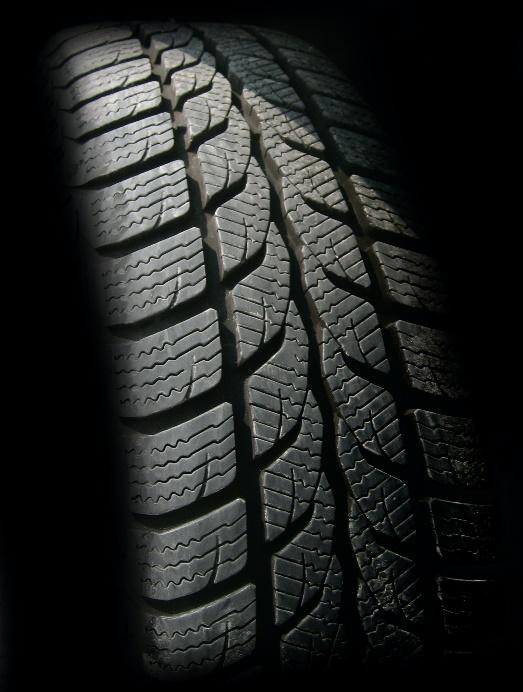 Hi folks, I’m Walter Wardrop, an Operations Management Coach at the Growth Roundtable.
Hi folks, I’m Walter Wardrop, an Operations Management Coach at the Growth Roundtable.
Often when I am working with clients, I help them develop ways to keep their products and processes as trade secrets. This came from my training at Michelin, where the system was designed to keep a fair level of information separate between the departments.
An example of this would be the rubber coming into the plant. At the train dock we were unloading bales of synthetic rubber. These bales would have a manufacture’s name, and probably some trademark or brand name identifying them. Say Dow Chemical 8500. The Michelin workers would strip the covering from the bale, chip it up into chunks, and drop the material into bins with a name like Fido. The next stage involved a large mixing machine, called a Banbury, that has a controller for 10% Fido, 23% carbon black, etc. to make up a certain mix of rubber. This program would mix up a 200 kg mix of rubber, and we would label it with some number like 5163 and a date code.
This 200 kg mix would travel to the extrusion department, where it would be shaped into a profile for the FE for 22.5-inch tire. This profile would then be built into a carcass or cover of a tire. The tire then went to curing, followed by verification, then onto the customer.
The key here is that at every stage there was a cut out in information. No-one could find out and follow the entire process. You had to go to the quality manager for the info, which was kept in a robust safe in his office. No one in the company, outside of the research division, really knew all the stages of the process, and what those stages involved.
There are other techniques for creating secrecy like this. An example is not actually putting the temperature on a gauge, but instead setting up the gauge with red, yellow, and green zones. The operator’s job was to keep the temperature adjusted so the needle stayed within the Green zone. A separate quality person would come along and confirm that the Green zone was still calibrated to the temperature required for that process.
Another technique I use for some clients, is that if they have a very proprietary system, to add several readings to the dials which have no actual purpose. People coming in and touring the factory, may look at the different devices, and they try to copy information which would be useless to them. A classic example is where you offset the temperature you want by 10 or 15°. The machine is running at 70°, but you show the gauge running at 90°. And you tell the operator keep it in the 90° zone. Visitors would think that is the correct temperature for the item and would be surprised when they ran the process in their plant and burned the material.
A Quality Versus Price Story
 Hi folks, I’m Walter Wardrop, an Operations Management Coach at the Growth Roundtable.
Hi folks, I’m Walter Wardrop, an Operations Management Coach at the Growth Roundtable.
While working at Michelin back in the early 1980s, I was a supervisor in the extrusion department. Michelin was at the time, and continues to be, extremely proud of the quality of the tires they are producing. Michelin has spent a lot of time in research and development, and I am sure are continuing to spend a lot of time on quality control and inspection. At the time, tire sales from Michelin were going out mostly to the OEM manufacturers.
The story I was told was that the sales guys had gone off to Detroit to meet with the OEM manufacturers. It was likely Ford that they were meeting with at the time. The Ford people told the Michelin salespeople that they would buy X million 14-inch tires in the next year. They would pay $22.35 per tire for that size. Oh, and they wanted the SPC results with every thousand tires.
The salespeople came back to Nova Scotia and trumpeted the fact that they got the order. Then they turned around and asked the other people in the room, “and what the heck is SPC?” The salespeople had very little knowledge of Statistical Process Control, so the acronym was totally new to them. To be truthful, most of the people in the plant also had little idea what the term meant. Fortunately, Ford was expecting this, and sent along a book that they had written themselves. This was my first introduction to the world of quality that was not based exclusively on inspection.
Why had Ford raised the stakes and requested this new requirement for SPC. The answer was quite easy. Sitting outside the major Ford car plants was an additional building that was costing Ford $50 million per year to operate. This building was responsible for checking the quality of all the tires coming into Ford, be they Michelin or competitors. Ford recognized the need to have high quality tires, and regardless of the good name of Michelin, set about inspecting every tire coming into their plant. Using SPC, Ford felt it might be possible to put this quality-control function where it should be, at the supplier plant. After all, the best place to check for quality is at the manufacturer, not at the customer.
I must admit to being one of the people who thought this SPC was just a pain in the butt. I had spent a lot of time in the verification departments at Michelin, and knew we were doing an excellent job of tire manufacturing. I was both surprised, then delighted, to find that our quality improved over the next few years as we implemented more and more of these SPC procedures.
This was about the time that SPC was really coming back to North America. It was here in the 1940s, but lack of interest during the post war economic boom drove Deming and Juran offshore to Japan. Japan had grabbed this life ring and made themselves the world standard in quality. The North American car companies finally recognized that they were being beaten badly by the Japanese automakers and started implementing some of the procedures that they had previously seen 30 years before. I will happily say that Michelin tires are second to none, but I am enough of a realist to agree that there is always room for improvement in quality.
A Quality Story - What Do You Use for Calibrating?
 Hi folks, I’m Walter Wardrop, an Operations Management Coach at the Growth Roundtable.
Hi folks, I’m Walter Wardrop, an Operations Management Coach at the Growth Roundtable.
While monitoring the mechanical scales one day, I noticed some operators stopping to place a tare weight onto the scale. I was surprised to see that the tare weight was just a block a plastic, a piece of high-density polyethylene about 2 1/2 inches on a side. As this was a high moisture seafood plant, not having a piece of metal sitting on wet benches made sense to me. I took the time to go over and pick up the piece of plastic and saw that somebody had carved the title 1 pound into the block. I thought this was good and placed the block onto a digital scale to confirm the measurement. But as I placed the block onto the digital scale, it tipped onto its side, and I saw the block was not solid.
The underside of the block had been hollowed out, and a series of screws, both ferrous and stainless, had been threaded into the block to adjust the tare weight. Remember, we were in a seafood plant, with plenty of saltwater. The ferrous bolts had taken on a lovely red hue from the rust. And we were using this to calibrate scales that had raw seafood touching the trays. I politely borrowed the tare weight and walked over to the quality control department. The quality-control manager listened to my observations, looked at the plastic block, and with a patient smile turned and dropped it into the garbage can. We both agreed that that was where it belonged, and the next day a set of proper bronze tare waits were out on the shop floor.
You really cannot fault the production floor, as they were just trying to do the right thing and make sure that they could calibrate the scales on an ongoing basis. What they had forgotten was that they were dealing with a seafood product, and you must pay attention to not contaminating the food surfaces.
It is surprising how many times I have seen employees having to improvise, as they are not being supplied with the correct tools to do their job.
A 5S Story - The Overstocked Toolbox
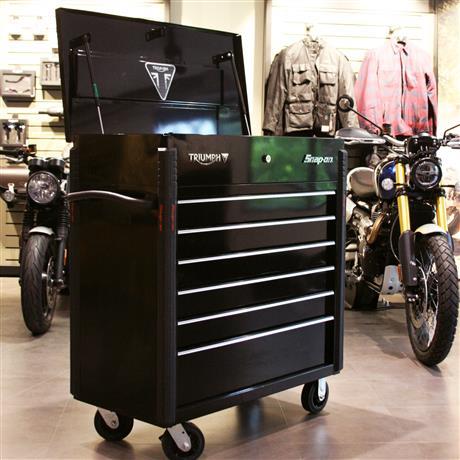 Hi folks, I’m Walter Wardrop, an Operations Management Coach at the Growth Roundtable.
Hi folks, I’m Walter Wardrop, an Operations Management Coach at the Growth Roundtable.
While working with a local manufacturing company, I was told a story by the manager about why he needed to eliminate toolboxes from his production floor. The manager had recognized, near the start of the lean journey, they had some serious issues with tools and consumables on the shop floor. While checking his monthly budgets, he realized that in any he often spent more money purchasing new tools than what was spent purchasing drills and other materials that were listed as consumables in the shop. As the environment was a benign one, he did not feel that the tools were being stolen or taken home. He took the time to have a look around and try to determine what was going on.
The manager took the time to visit one of the manufacturing cells and watched the process for an hour to determine what tools were being used frequently. As it turns out, most the operators had set out the tools they needed that shift at the start of the shift, and then left their large 5 foot high and wide toolboxes closed up, as was seldom anything else they needed from the tool chests. A little more investigation revealed that most of the manufacturing cells used very few tools. These tools could be put onto a shadow board, and the rest of the tools were seldom touched, not just daily, but even monthly.
This still did not explain why there were so many tools being purchased. As the manager looked further into the problem, he came across the fact that the mechanics who owned the toolboxes wanted to be sure they had all the tools they might ever need. If someone else had a quarter-inch drill, then all the mechanics wanted to have a quarter-inch drill in their tool chests. The fact that no process or part in their manufacturing cell needed the use of a quarter-inch drill was almost immaterial.
As the manager installed the shadow boards through the different manufacturing cells of the plant, the mechanics asked the manager what they should do with their toolboxes. The manager very honestly replied “Please take them home, it will be cheaper for me if you do that”. A mechanic has long lived by the fact that the tools are his life. But if the mechanic is working in a manufacturing setting, consistently making the same items of the same products, he will seldom need the range of tools that he has in his tool chest. It is far better to put most of the tools required onto a shadow board and leave the extra and the unusual tools for the occasional use back in the stock room. This is a classic example of our friend Pareto, where 20% your tools are used 80% of the time, and the other 80% of your tools are only use a small portion of the time.
An additional benefit of getting the toolboxes out of the plant was that it freed up valuable space and made it easier to work in the facility. As there were multiple shifts, there were multiple toolboxes in each manufacturing cell. Getting rid of all the toolboxes, and having conveniently placed shadow boards, reduced and eliminated many problems.
Another classic example of this was the broken broom sitting against a post. After seeing this broom several times, the manager asked the operator in that cell why he did not replace the broom. The employee pulled the manager aside and whispered to him that he did have a good broom, but he kept it hidden. By having a broken broom out front, the employee knew that nobody was ever going to borrow the broom to sweep up, as they would assume that he did not have a good broom and look elsewhere. The manager quickly determined that he had an interesting problem here and solved it by installing shadow boards with a broom and a dustpan at a range of sites around the plant. Employees needing to hide good brooms from other employees is a waste of time and resources.
A Quality Story - The Histogram, and Why it Works
 Hi folks, I’m Walter Wardrop, an Operations Management Coach at the Growth Roundtable.
Hi folks, I’m Walter Wardrop, an Operations Management Coach at the Growth Roundtable.
Many years ago, in a seafood company, I was asked by my boss to determine why the yield was poor on the 10-pound boxes of fish and batter. The company had been tracking the yield. They were putting 1000 pounds of frozen fish and batter into a packing line, but only getting just over 900 pounds equivalent in finished goods. By this I mean they were getting 90 or so finished 10-pound boxes of fish portions.
I set up a digital scale and requested a pallet of the product (seven layers of 10 boxes), be pulled from the freezer. To improve the accuracy of my study, I cut the tape on the carton, opened the carton and lifted the plastic bag, with the fish and batter in it, onto the weigh scale. I started weighing the bags and recording the various weights on a piece of paper. By the time I got to the break, I had done about half of the pallet. During my break I told my boss that I had not noticed any variations in the weights in these cartons.
My boss said that was fine, but as I was halfway through the pallet, why not just finish the pallet and see what I could find. I went grumbling back to my post and continued writing down the numbers as I took them off the weigh scale. When I finally finished all 70 of the weights, I returned the repacked pallet to the freezer, and came up to report to my boss that there had been nothing unusual in the numbers. My boss suggested that I put the numbers on a chart, such as a histogram, and see what they look like. Grumbling to myself, I returned to my desk set up a simple histogram chart with a scale of 9.5 to 10.5 pounds on the bottom axis. I started transferring my table of weights to the hart. The first two marks were fine, but then I came to a very strange number. The weight recorded on my sheet was 11.1, not 10.1 pounds. I took a close look to make sure there was no mistake, marked the outlier onto my chart, then continued down the list. Several entries later I came to another number that was in excess of 11 pounds, and asked myself what the heck is going on here? I took a very close look at the numbers, assuming the crew on the floor was just having fun with me. I had left the clipboard behind when I went off to break. But looking at the numbers, whoever put in the strange numbers had writing that was just the same as mine, or they were a master forger.
By the time I finished the charts, I found there where two distinct curves in the numbers I recorded. I finally concluded that I had recorded all the numbers, and the issue was not someone playing a joke. Of the 70 numbers I had recorded, at least 10%, as in seven or eight of them, were way out of tolerance to what we were expecting to have in the boxes. When I took another look at my recording of the numbers, I noted that several of the over-weights had an asterisk beside the. The asterisk was not there to indicate that the number was high. I placed it there as an indication that the sheet of plastic inside that box had not been properly folded over after filling. I intended to quietly talk with the Quality manager later and point out how there was a quality problem occurring in the preservation of the materials inside this box. The operators were either being rushed, or inattentive, and were not folding the plastic sheet up neatly in to preserve the contents.
I noticed the correlation between the plastic sheet problems and the high weights. I walked out to the shop to have a look at what was happening at the post. The standard set-up was three ladies packing the portions into the boxes, and one man weighing, closing, and palletizing the boxes. The ladies would place a full but still open case onto a conveyor feeding down to the weigh scale. There a male operator was lifting the case onto the weight scale and adding or removing portions to get the correct weight. He then folded the plastic liner, closed the box, sealed it with tape and moved it to a pallet. Well no surprise to anyone, the ladies could pack the cases a lot faster than the young man could weigh them. The result was the conveyor quickly became full of still open cartons until the weighing operator was scrambling to try and keep up. In the process of the scrambling, two things happened. The first was of course the plastic sheet did not get adequate folded over the contents. The second was the method that the operator used to make the weight. This was a very modern digital scale, and the operator would be looking at the digital reading with his peripheral vision monitoring the weight on the scale. What he was watching for was the weight to turn from 9 pounds to 10 pounds. But when he was rushed, he ended up keeping an eye on the scale only with his peripheral vision and was looking for the weight to turn from a single digit to a double-digit in front of the decimal. Well guess what, 11 is just as much of a double-digit as 10.
What did I do to solve this problem? I just brought a second scale up to the post, and had the supervisor tell the operators that as soon as the conveyor was full, one operator should stop packing and go over and do the weighing job until the conveyor of open partly filled boxes was empty again. By balancing the workflow in this fashion, the weighing operator was never rushed, he could make sure that an accurate 10 pounds was in the box, and that the plastic was neatly folded over to preserve the contents.
The dollar saving to the company was $100,000 per year. The operators were much more comfortable, nobody was pushed for speed, and the workflow balanced itself quite easily.
This is a classic example of a double curve on a histogram. What this tells us is that there are two processes taking place in the shop. In this case the primary process was the operator working comfortably, and able to keep up with the packing operators. The second process was the packers getting ahead of the weighing operator, and the rush process resulting in the overweight boxes being palletized. This was also a valuable lesson to not just write numbers down, but put the numbers on a histogram or bar chart, to see what the picture of the data looks like. I was an experienced engineer, and I could not read what was happening in the numbers I recorded. But draw a few simple marks on a chart, and the picture of the problem leaps off the page.
A Quality Story - The Beer Case
 Hi folks, I’m Walter Wardrop, an Operations Management Coach at the Growth Roundtable.
Hi folks, I’m Walter Wardrop, an Operations Management Coach at the Growth Roundtable.
While doing my industrial engineering job for National Sea Products, I was asked to visit a cardboard converting plant that was printing the graphics on our cardboard cartons. We had several issues with product quality. Our management felt that the supplier could use some assistance on the quality and industrial engineering front, to improve the product that they were shipping to us.
The purchasing manager and I flew to Montréal and had an excellent tour of the plant with the supplier’s management team. At the end we sat down and pointed out a variety of places where they were having problems in quality and productivity. We were polite and offered a whole variety of suggestions. The supplier listened patiently and were quite agreeable with most of the suggestions that we pointed out.
We flew back to Nova Scotia, and several days later received a letter from the company thanking us for the visit. They agreed that there were some minor quality problems and felt that they could improve on them without too much trouble. At the same time, they thanked us for past business, and pointed out that they felt it would be more appropriate to concentrate on their primary customers. They did not feel it was worth their time to supply us with the quality of product that we were looking for, as we represented such a small percentage of their overall business. It turned out that their primary customers were the beer companies in Québec. These beer cases represented such a large percentage of their volume that they did not feel it was necessary to service secondary customers with higher quality expectations.
It always surprises me how companies do not feel that quality and productivity are important to them if they are making money. When a customer is willing to work with you and help you improve your productivity and quality, this should be a major benefit to the company, rather than being an inconvenience. Yet time after time, as I visit companies, I come across the same problem. If the company is making money and has some black ink, then they do not think they need to change what they are doing. If the company is in trouble and has red ink, then they feel they do not have the time for improvements right now. When they get back into the black ink, they will give me a call.
A 5S Story - Paper and Highlighters
 Hi folks, I’m Walter Wardrop, an Operations Management Coach at the Growth Roundtable.
Hi folks, I’m Walter Wardrop, an Operations Management Coach at the Growth Roundtable.
While touring an aerospace company, we were given a demonstration of how they used the 5S system (Sort - Set in Order – Shine – Standardize – Sustain) to clean up work cells, and sort out the useful equipment from the junk. The manager had been pushing the production floor to do the 5S procedures, and their response had been a playful “If we do it, will you do it to your office”. The manager was smart enough to realize that he needed to walk the talk, and so he agreed, and after 5S’ing the manufacturing cell on the floor, the team went through his office.
Several days later, they ceremoniously made him carry the two big bags of paper, that he did not need, out to the recycling bin. He was not happy about this, and even six months later, he was sure he would need one of those pieces of paper, one of these days. He just had not quite needed the document yet. Additionally, the 20 highlighter pens that they had found in his office was slightly excessive, but not too unusual. Though he had to agree with them, the fact that all 20 of the highlighters were yellow was probably bad. His final comment, said with a chagrined smile, was that they had restocked the administration supplies cabinet with enough materials to keep it going for several months.
It always surprises me how much time and focus we spend with industrial engineering on the shop floor, yet time after time that is not where the major issues or constraints are in a company. When starting a project of improvement, with a company or business, look at the entire process from supplier, right through to customer, and even beyond to reuse or recycling of the product. Then address where in that system we need to look for process, quality, cost, and other improvements, that might be appropriate.
A Quality Story - Digital Scales Versus Mechanical Scales
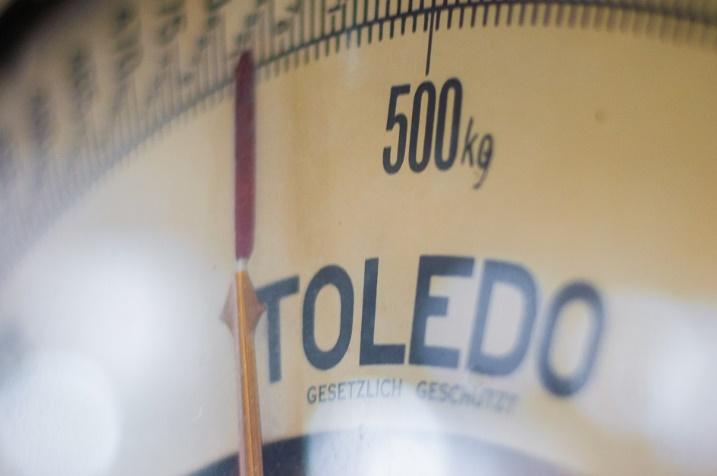 Hi folks, I’m Walter Wardrop, an Operations Management Coach at the Growth Roundtable.
Hi folks, I’m Walter Wardrop, an Operations Management Coach at the Growth Roundtable.
While working in a filleting plant at National Sea Products, I noticed that the packing operators were still using old balance beam scales. Nearby, there was a rack of digital scales stored on the wall. With the assistance of the supervisor, I brought the scales down and set them up on the benches. We immediately noticed a drop in packing efficiency on that line. This caught us by surprise, as we expected the operators to speed up with the better accuracy coming from the digital scales. The production numbers did not change, even though we monitored the line for several days.
I discussed the issue with the operators, and it turned out they were so used to the mechanical scales that they could read the swinging of the scale arm and pack the carton accurately based on the swinging. This is fine for productivity, but it had a negative side in that it could create a quality problem. When the old mechanical scales went out of calibration during a shift, the problem would not become evident until the quality operator did a tour of the shop, checking the weights from the operators. This occurred every half hour or so, as the quality inspector rolled their cart through the shop. The inspector would take some sample weights of the 1-pound cartons. Colored crayons were used by the operators to indicate their respective packed cartons. If some out-of-tolerance cartons were found, the quality inspector then had to search through a mass of plate freezer trays, looking to isolate the out-of-tolerance cartons. Remember, it was not that the operator had done anything wrong, just that their scale had gone out of tolerance.
I hoped to solve this problem with the digital scales, which were much more robust and self-calibrating. But the digital scales slowed the operators, as they waited for the scales to give an accurate reading. So, we came up with a balanced approach. The old mechanical scales were left in place, but I asked the operators to stop every 10 or 15 minutes, grab the last two or three cartons they had filled, and check them on the digital scale at the end of the bench. This was a simple procedure, and only slowed the operators slightly. The result was a very positive one, as the operators could quickly detect whether their scales had gone out of tolerance and get them adjusted and pull back any other defects that have been produced.
This also resulted in a massive reduction in internal quality problems, as the quality control inspector no longer had to check all the lines during the day. In the old method, each time a problem was found, the inspector spent another half hour or more going through the racks pulling out defects. With the new method, everything going into the trays and heading for the blast freezers was now the correct weight. When a problem was noticed, it was quickly sorted and dealt with.
This is another classic example of assigning quality control tools to the operators. This is much better than making the quality control inspector into a police person, going around checking to see what is wrong, or who is making defective items.
A Quality Story - Cardboard Problems
 Hi folks, I’m Walter Wardrop, an Operations Management Coach at the Growth Roundtable.
Hi folks, I’m Walter Wardrop, an Operations Management Coach at the Growth Roundtable.
While working at National Sea Products as an industrial engineer, I was asked to look at a problem the company had with supplies of cardboard used for packaging a variety of breaded and battered fish portions. The cardboard was used in what was called a Klic-lock machine, and the machine was reasonably fussy about the thickness of cardboard being used to form the carton. National Sea was aware that I had some statistical quality knowledge from Michelin and asked me to look at the problem and how they could inspect for cardboard thickness and variation.
After checking the stock of the cardboard cartons, I realized we needed to gauge the cardboard thickness on a sampling basis, as the pallets of cases of cartons were received. I purchased a set of digital calipers that plugged into a small computer the size of a paperback novel. With the electronic caliper, the operator could sample 30 sheets of cardboard from several open cases, and quickly gauge the thickness of the cardboard. When the sample was complete, the operator would press a button on the device, and it would generate a paper record with a histogram showing the bell curve and the standard deviation of the cartons.
This device quickly became a critical component in our quality control system. Sampling had an additional benefit as it would show the operators if there was a mixed lot of cartons in the case. The mixed lots came about as our print runs were reasonably small, and the company manufacturing for us was using large format cardboard in their machines. The press could print up to 10 cartons per sheet, and we had combinations of two or three different products on a single large sheet of cardboard. If the cardboard plant made a mistake at the separator, they might end up with a stack of codfish cartons inside the case of pollock cartons. Sampling gave us a chance to have a quick glance inside some of the cases and make sure we did not have different cartons in the wrong case.
With this tool we were able to give feedback to the manufacturer, who at the time was in Central Canada, on what we were seeing in cardboard thickness variation. We did not expect to see any variation in stock, as we were buying the paper directly from the pulp and paper plant and supplying it to our cardboard converter. However, time after time we did see variation in stock coming to us.
In one case, the errant stock got as far as our production plant, and quickly shut down the production line. The operators could not control the Klic-lock machine to lock the corners, as the cartons were made. A sampling with the digital caliper showed that the board stock was extremely thick compared to what we specified and ordered. We contacted the supplier, and they said that they been out of our paper stock for the current run but had a thicker stock available and used this. They generously said that they would not charge us for the extra cost of the thicker paper stock. Our response was that we were sending the shipment back to them, as it was not what we had ordered, and was unusable in our machines.
It is always amazing how companies, who think that they are supplying you with a better-quality product, do not have the knowledge of your process to recognize that the better item is unusable in your process. There is a reason for having specifications, and you need to work within the specifications, both from the supplier and the customer viewpoint, to have successful companies. With that simple piece of digital technology, I could quickly sort out what was good and what was bad, and best of all I could fax a scan of that histogram to the supplier. The supplier would immediately realize that they had a problem in their system. Words are always interesting, but when you can send them a diagram and the data to go with it, the solutions seem to appear much quicker.
A Quality Story - Always Ask Why It Is Free
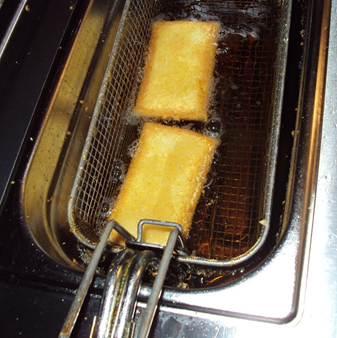 Hi folks, I’m Walter Wardrop, an Operations Management Coach at the Growth Roundtable.
Hi folks, I’m Walter Wardrop, an Operations Management Coach at the Growth Roundtable.
While working in a value-added fish processing plant, it came time to replace an existing fryer with a new format of fryer. The old machinery required heat transfer technology, with a natural gas burner in a separate enclosure from the actual fryer. Heat was transferred between the two devices using a specialized oil product designed for the purpose.
As we were sitting discussing the project timeline of pulling the old machine and installing the new fryer with its internal heating, I happened to ask whether anyone had checked the heat transfer fluid for toxins. I remembered the same types of fluids were used in electrical transformers, which had for many years contained a toxic material called dioxin.
I was quickly informed, by both maintenance and the quality department head, that the oils had been checked and confirmed to be dioxin free. This was very important for a food facility. But then the maintenance manager became quiet and thoughtful and said he had to check something and get back to us.
A week or so later, the maintenance manager came back to us, and informed us of some bad news. He had gone back to research his records, as he remembered that the supplier of the original machinery had come by about a decade before, and had changed the fluid in the machinery, without being asked by our company. The supplier passed it off as a free service, and they were just upgrading the oils to the new materials that were available. As you have guessed by now, the old oil did contain dioxins, and the supplier was quietly doing an internal recall across food companies.
The problem that our plant had, was that the supplier had replaced the oil, but had not flushed the machinery. They had taken the old oil out, and replaced it with the new food safe oil, but there was still a coating of dioxins within the old heat exchanger. This coating then contaminated the new oil, and we have been running with the dioxin laced material for several years. As we tore the old machinery down, it had to be handled with great care, and sealed off within a closed room while being drained.
Up on the hill above the plant we built a small building, with a fence around it. Alarms, fire monitors and sprinklers, and all the other necessities were installed. The barrels of toxic oil were taken to this building, and stored, as there was no viable method of disposal of this material. One more toxic waste site was added to the provincial map.
Obviously, we were less than happy with the supplier of the machinery and oil, as they had not told us what the problem was. We could have solved the problem sooner, and with far less risk to our employees and our customers. You must be careful when your supplier offers a free service. What is that old proverb about beware of people bearing gifts?
A Quality Story - 5S at a Racking Plant
Hi folks, I’m Walter Wardrop, an Operations Management 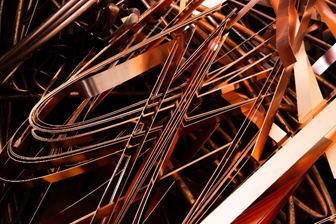 Coach at the Growth Roundtable.
Coach at the Growth Roundtable.
Years ago, I had the opportunity to visit a plant that was making pallet racking. They were just getting started on their lean journey. I had worked with the manager several years before while he was with another metal machining company. He had recently been hired by the racking plant owner to join the management team and help them start, and then proceed down their lean journey. The manager had listened to me at the previous company and invited me over for a first tour of what he had ahead of him at the new racking plant.
We got to the plant floor and went for tour, and as was my usual style, I started to point out all manner of skeletons that he had lying around in his production area closet. We went down to the end wall and found large pallet totes, like what we both remembered from his previous company. The totes were full of a variety of metal pieces. The metal pieces were probably stock items, and I pointed out to the manager that all the pieces had a thick layer of dust on them. It was likely that they were surplus on previous orders, and nobody ever got around to either selling them, or adding them to subsequent shipments.
This is an issue that we find with many companies, wherein they realize that the operation damages or scraps products through the course of the production process. The company usually starts off with anywhere from 105% to 110% of what they want for the finished order going out the door. Frequently they do a better job than they expected and have some finished goods that are surplus to the order. They then store the parts for the next order that will come from the customer. Hopefully, someone remembers to deduct the already completed parts from the start of the next order. However, this usually does not occur, the parts are lost on the shelves, and they become part of the ebb and flow of materials through the racking of the company.
A simple solution I have to this surplus production problem, where a customer orders 100 parts, production starts with raw material for 110, and finishes the order with 103 parts in stock, is to ship all 103 of the parts to the customer. However, only bill the client for the 100 parts that they ordered. The manufacturer would much prefer to get the parts off the shelf and over to the customer where they could serve some useful purpose. When you look at the problem, you realize that the company has billed the client as if they were making 110 parts, with the extra cost already built into the invoice. The client has already paid for any extra parts over the 100 they ordered, so ship the parts and get them out from underfoot.
Further in our walk through the plant, we came across a variety of steps and procedures where WIP (work in process) was building up and being stockpiled. And that made me suggest to the manager that one of the first tools he should use would be the value stream map. This would allow him to see just how much value they added during their product travelling through the plant. Large spaces were being tied up with batch type processing, large amounts of material sitting at various stages through the process. Truth be told was that his process could go quite quickly. The metal for the racks came off rolls, and the machines formed it into the rack profiles. Some welding and a little paint, and the piece was finished. The next opportunity for savings was the exchange of dies necessary to roll the profile they were working with. When the manager arrived, this was taking hours, but in due course they would reduce it to a much shorter timeframe. After the rolling process came a welding process and here is where more jigs were necessary, and improvements could be made through that. Then straight into a powder coating machine where the rack was painted and sealed. After this point the rack was stacked in the yard until the entire order was built, then shipped to the client.
One of the first things the manager did was 5S training of employees, then the implementation of 5S through the plant. Sort, Set in Order, Shine, Standardize, Sustain. These steps involve going through everything in a space, deciding what's necessary and what isn't, putting things in order, cleaning, and setting up procedures for performing these tasks on a regular basis.
The manager took a binder full of pictures of what the plant areas looked like before they went through the process of 5S, and then a new set of pictures after with the new setups implemented in the different cells. I remember on my next visit to the plant meeting with the manager and him proudly presenting the 5S book of pictures, with before and after labelled. My comments after looking through the first couple pages were that they were nice pictures, but he really should have tried to take the pictures of the same places in the plant. He looked at me with a benevolent smile and told me they were the same places in the plant. I went back and had a longer look at the pictures, and finally realized that I had to look at the electrical cabinets and switches on the wall to determine if I was still looking at the same place. The pictures were so radically different it took focusing on external elements such as permanent wall fixtures to confirm that I was looking at the same spot from the same direction.
The company was so successful in implementing this 5S process in the racking portion of the plant, that they took it across the street to their forklift repair facility. Here they came across a variety of things, such as a forklift repair cell with 10 cans of WD-40 in use. And they found this in more than just one cell.
A Quality Story - Emptying the Small Fryer
Hi folks, I’m Walter Wardrop, an Operations Management Coach at the Growth Roundtable.
at the Growth Roundtable.
While working in the value-added seafood area, I came across a problem with a small fryer that was only used to process small batches of battered product occasionally. The fryer was for specialty products and had small volume runs. It was used one to two days a week and left covered for the rest of the week. The problem that arose was that the oil left in the fryer would start to create free fatty acids. When this happened, the company had to send the oil for recycling.
One of the machine operators made an excellent suggestion. Why not fill this small process fryer with new oil in the morning, run it for part of the day, and then shut it down? Then pump the oil from this fryer, with the oil still being clean, over to one of the major frying lines. These major lines had so much throughput, they could easily absorb this excess oil and use it in their process within hours.
The result was that the low volume products were continuously running with brand-new oil. After a half day run, the mildly used oil was then pumped into the major fryers, which had sufficient pickup that they could easily make it disappear over the course of the next few hours. We went from having a quality problem, and a major waste problem, to having no problem at all.
We had of course spent plenty of time investigating how to preserve the oil between runs, rather than asking the more obvious question, what can we do with the oil at the end of a run? You must always remember that what might be considered waste from one process, can be the feedstock for another process.
